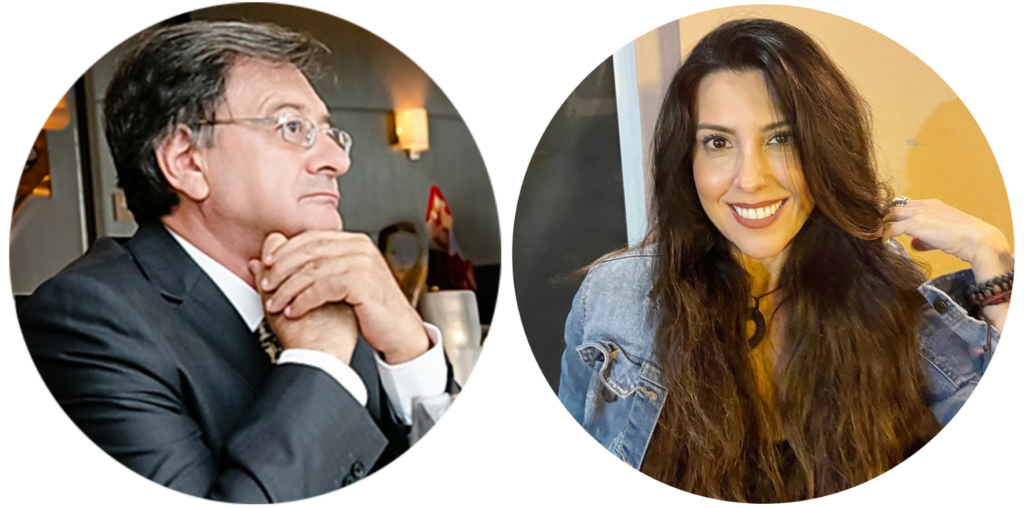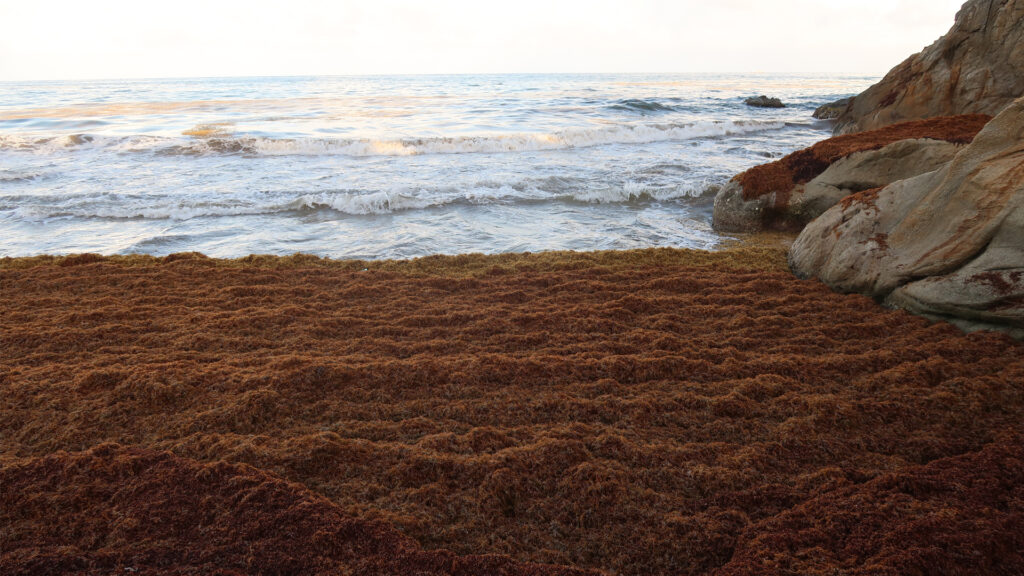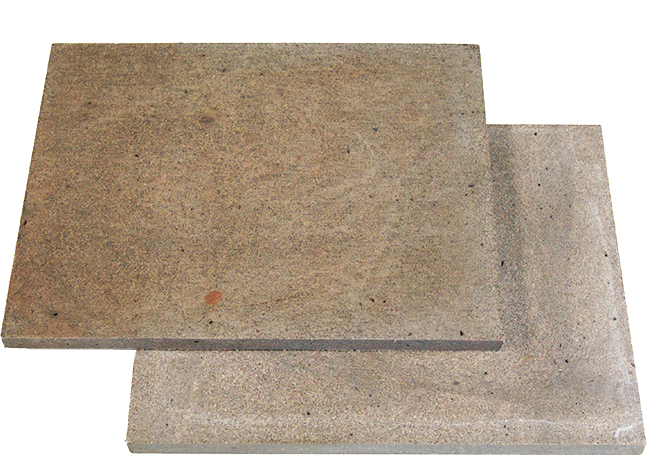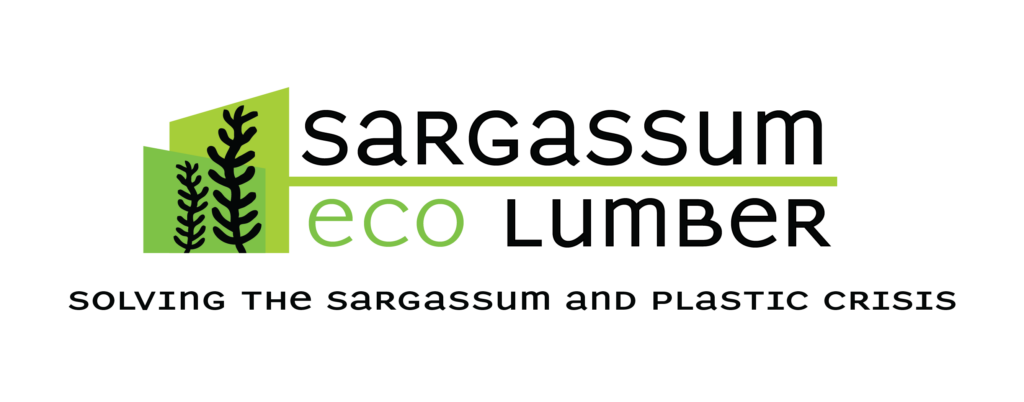By Megan Mascheri, FAU Center for Environmental Studies
The following Q&A was conducted with Raquel de Antonio Crespo, co-founder of Sargassum Eco Lumber. The Homestead-based startup converts sargassum seaweed and plastic waste into eco-friendly lumber and building materials. This interview has been edited for length and clarity.
To start, can you tell us a little about yourself and Sargassum Eco Lumber?
Well, the company was founded by me. … I’m the CEO, and my father, who is the co-founder, he’s actually the inventor of the solution. It’s funny because (my background) is more in marketing and business. I’ve been also an entrepreneur in the past with other ventures, but not in the tech space. I’m an entrepreneur by spirit. I think it runs in the family.

Last year, (Sargassum Eco Lumber) started because I saw in the Miami Herald that Miami authorities are looking for solutions and ideas of what to do with sargassum. And I remembered like five years ago, me and my family went to Tulum, Mexico, and my father is a mechanical engineer and an inventor in sustainability. We were at the beach, and the beaches were covered by sargassum. (My father) was very curious about it and he was taking some samples. So, when I saw that (Miami Herald article) last year, I called him, and I said, “Hey, this is going on here in Miami … Sargassum is a really bad problem — they are spending like $4-6 million to clean the beaches of sargassum. So, they’re looking for ideas or something. Did you do something with it?”
And he said, “Oh, yeah. I made some wood. I have some samples. I’ll send it to you tomorrow.” And a couple of days after I had some samples of the wood.
And I started getting ready for this competition (with Seaworthy Collective, a Miami-based nonprofit organization that supports entrepreneurs in “blue tech”). That’s what I do, the business part, the marketing and the LinkedIn page, all the materials.
Before I was even finished, I got an email from a person that was interested. He told me. “Hey, we’re going to be at Portland, Maine for this agriculture conference and we would like to talk to you.” So, I traveled to Portland, and people were interested. And that’s when I saw that we had something really good.
We were not only solving the sargassum problem, but also the plastic (problem), because our product is made of 60% recycled (plastic) and 40% sargassum. (The sargassum) absorbs carbon dioxide, so we were making some calculations of our greenhouse emissions (compared) with regular plywood, and we were surprised because it was like 750-1,000% of greenhouse (gas) reductions.
What was the process behind creating the Ecolumber and designing the business?

First, we collect the sargassum from the beaches. Then we dry it up to 14% humidity. We have designed a process for drying the sargassum in a transportable sargassum dryer inside a container that’s solar-powered. The process is environmentally friendly with no dust or fumes. We will place the dryers next to the beach so we can dry the sargassum in place because 80% of sargassum is water, so the cost and implications of transporting the wet sargassum is a problem.
The idea is to dry it in place and then transport it to our location. We collect the plastics and process the plastics by densifying them with heat. Then we make a mixture with the dried sargassum and plastics. And then it goes to a 3,000-ton press that injects the composite and makes it into the panels.
All this is proprietary technology designed by my father, because during all his testing he saw that the composite material is very dense. So, there’s not really the machinery in the market that can make the panels. The dryer and the 3,000-ton hydraulic press are proprietary machinery that’s already patent pending.
Can you tell us more about any local and upcoming projects where we can find this product?
It’s now just being (put) in production, unfortunately, because we are looking right now for funding to set up our facility and construct our proprietary machinery. But there’s been a lot of interest locally. …

We’re also in conversation because everything’s been happening really fast even though we’re not in production yet because of all of the investment it requires to build our facility. We have our prototype already in place all the samples in place. We’ve done some testing for the strength and durability, and the results are pretty amazing. It’s superior to plywood.
Early this year we got selected to go to Paris to JEC World, the global leading composites expo as part of the startup booster. We were representing the U.S. … and they gave us a space to showcase our solution during the three days (there) and we made some really good contacts. People were very interested and ready to place the orders.
We met a company that’s like the leader in the pallets industry. And all the logistics and shipping companies are also looking like to achieve net zero (carbon emissions) by 2040 or 2050. And they look at our solution as something that could be very beneficial for them. So right now, we are doing some testing and starting conversations together.
But that’s another application for the EcoLumber that we didn’t think of before – pallets. And the pallets industry and market are huge. Everything is on pallets now. So that is a great opportunity that we are working right now with them on. We’re looking at all the options.
What kind of impact do you think this company has on the economy?
I mean, economically, look everywhere. Lumber is used everywhere. That’s when I see all the opportunities that we can have that we haven’t even thought of yet. Our lumber is water resistant, so it can also be used in maritime industry and water applications, (among) other applications. So, it’s endless, what can I say? The reduction in the carbon emissions is like 21 million tons of CO2 by 2050.

And I mean for the economy, imagine our lumber gets into building homes. All the prices of the homes could be not only lower, because the price of the lumber of our panels has price parity to regular lumber. Our raw materials are very inexpensive, free or we can get paid to clean the beaches.
That would be our idea: to clean the beach at a reduced price from what they’re paying now for waste management companies and get our raw material — and at the same time solve an environmental problem.
This Q&A was conducted by Megan Mascheri, a graduate research assistant at Florida Atlantic University who is pursuing a master’s degree in its geosciences program. She has worked as a research assistant for FAU’s Center for Environmental Studies since 2021. The center manages and funds The Invading Sea. Banner image: Saragassum on South Beach at sunrise (iStock image)
Sign up for The Invading Sea newsletter by visiting here. If you are interested in submitting an opinion piece to The Invading Sea, email Editor Nathan Crabbe at ncrabbe@fau.edu.



